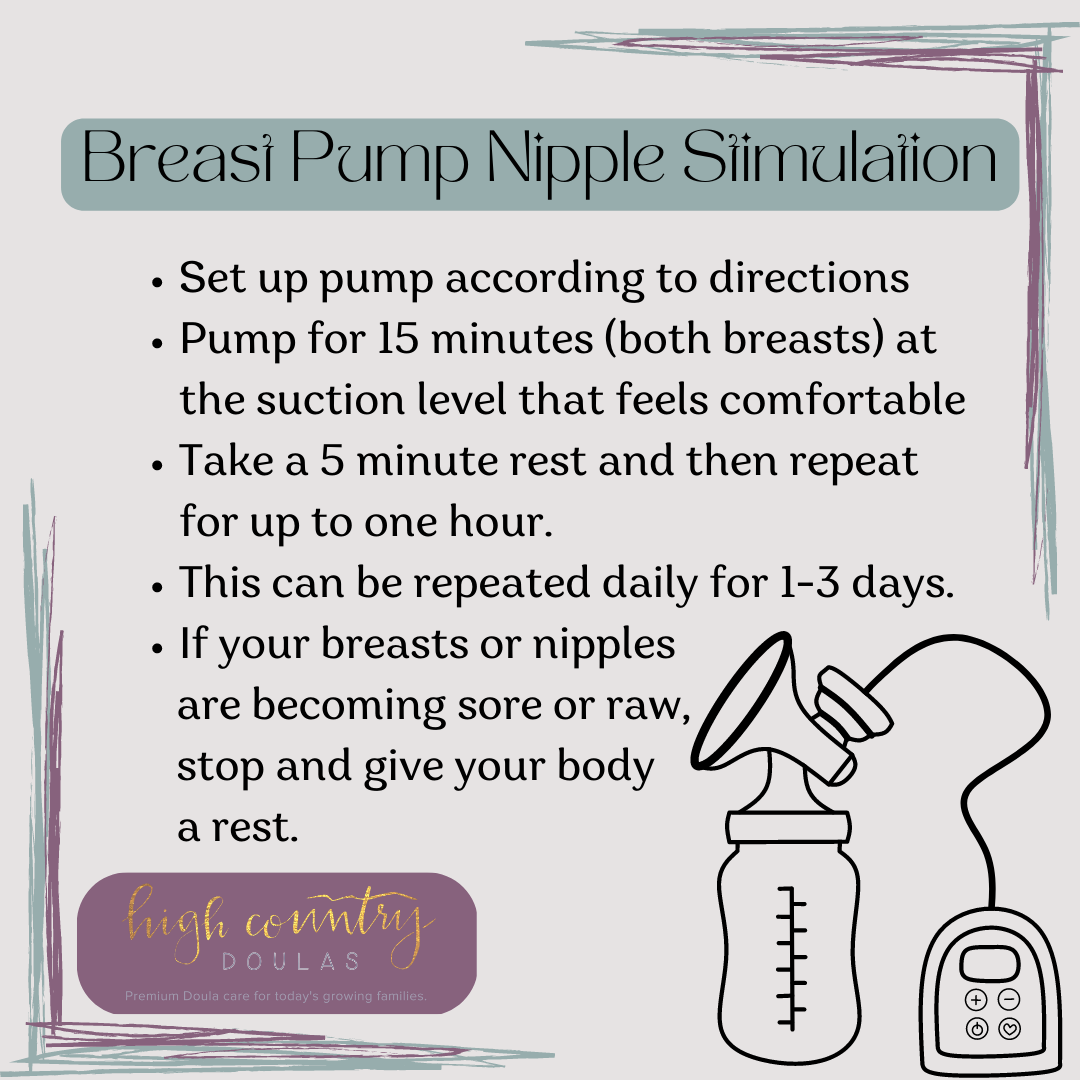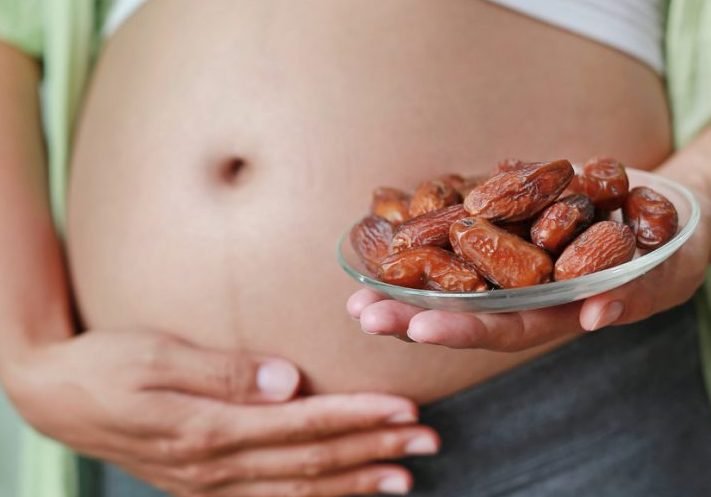Non-Medical and Natural Inductions
Are you coming up on your 40 week mark of pregnancy and don’t want to be medically induced? If so then this blog post is for you! The American College of Obstetricians and Gynecologists (ACOG) reports that 20 to 40 percent of pregnancies are medically induced. While the use of medical care during labor is well-documented, less is understood about the use of non-medical means of labor induction and pain management in the U.S. population. If you would like to know more about medical inductions you can read our other blog post here. The latest survey data we have on this in the United States comes from the Listening to Mothers III survey, which was published in 2013. In that study, they found that 29% of US mothers reported that they tried to induce labor on their own. Over the years new natural at-home methods have popped up, this post will include some of the more popular options.
Pineapple
Contractions shown in studies about pineapples are similar to contractions caused by Pitocin, which is a synthetic oxytocin IV given for inductions. There are no studies on human pregnancies meaning there is no concrete evidence eating pineapple will induce labor. While there is a lack of evidence with humans there have been studies done on rat and human uterine tissue where pineapple juice did cause contractions. There is no harm in trying pineapple but don’t eat too much with gestational diabetes it may increase blood sugar
Sex
In 2019, a study offered three explanations as to why sex might be an effective method for natural labor induction.
Human semen is the biological source that is presumed to contain the highest prostaglandin concentration, prostaglandins are a hormone that are known to induce labor.
Sex sometimes includes nipple stimulation, and nipple or breast stimulation has been found to increase the chance of going into labor due to the release of oxytocin.
Sex and female orgasms have been linked to an increase in uterine contractions.
Many studies have been done that have concluded sex doesn’t induce labor but it can be healthy and beneficial during the third trimester.
Although we lack evidence that sex is an effective way to start labor, there’s no harm in trying. Sex is considered safe for most pregnancies, consult with your provider if you fall into the categories of premature rupture of membranes (PROM) or high risk pregnancies before having sex. Also having sex once water is broken can increase the risk for infection.
Walking
Walking has little evidence for the claim of inducing labor but there was one study done that walking at moderate intensity for 30 minutes 3 times a week may increase the chance of spontaneous labor. Exercise has many health benefits during pregnancy but consult with your provider before starting an exercise routine if you are considered a high risk pregnancy.
Acupuncture and Acupressure
The purpose of acupuncture or acupressure is more to ripen the cervix and ready the body for labor rather than to start contractions. Randomized controlled trials have shown that acupressure during labor has been linked to reduced pain intensity and anxiety, lower cesarean rates, less need for Pitocin augmentation and shorter labors.
Breast or Nipple Stimulation
Nipple stimulation, manual or with a breast pump, causes the release of oxytocin from the posterior pituitary gland in the brain, which can start or increase uterine contractions. Researchers state that this induction method has the advantage of being cheap, non-medical and gives pregnant individuals more control over the induction process. Breast stimulation and nipple stimulation have been used to induce and augment labor in many different cultures around the world. One study found, 37% of the participants who stimulated their nipples went into labor within the following three days, compared to just 6% of those who did not stimulate their nipples. Another study used electric breast pumps and the results showed the time between the start of stimulation and the start of contractions was much shorter in the group that used the electric breast pumps. If using a breast pump is a good option for you, consult with your provider to make them aware and ask any questions about when a good time to start would be.
Castor Oil
In 2018 a study found that castor oil was more effective among people who had given birth before. Three of the randomized trials included in this Cochrane review found significant results in support of castor oil’s effectiveness for induction of labor. 58% of the people who received castor oil began active labor within 24 hours compared to only 4% of those who received no treatment. While castor did seem to induce labor 100% of castor oil recipients reported nausea.
Date Fruits
Researchers have found beneficial effects when people start eating date fruits by at least 36 to 37 weeks of pregnancy. The studies that found beneficial results, instructed people to eat 70 to a hundred grams of date fruits daily. This is the equivalent of three to four large medjool dates that are pitted or six to 10 smaller dates that are also pitted. Many trials show that eating date fruit improves the Bishop score and focuses on readying the body for labor. Date fruits can be very nutritious during pregnancy, if you have gestational diabetes speak with your provider about the possibility of an increase in blood sugar if you want to try the date fruit method.
Red Raspberry Leaf
Red raspberry leaf has been used medicinally since at least the sixth century. The traditional medicinal use has been to treat problems related to menstruation, childbirth and the gastrointestinal tract. Raspberry leaf is sometimes recommended by friends and family during pregnancy to help you strengthen and tone the uterus for labor and to prevent hemorrhage after the birth. Results from studies have been mixed and there is little evidence that red raspberry leaf would induce contractions.
Evening Primrose Oil
Evening primrose oil contains gamma-linoleic acid which is a precursor of prostaglandins E1 and E2. There have been trials for vaginal use and oral use, vaginal use was found to be useful for cervical ripening. Evening primrose oil can cause nausea, headaches and diarrhea in some cases according to studies. Don't try if you take Phenothiazine, antiplatelet or anticoagulant medications.
Herbal Treatments
For this approach make sure to discuss with your provider and a qualified herbalist.
Few herbal compounds have been tested so the adverse effects and safety levels aren’t always known.
Black and Blue Cohosh
Caulophyllum thalictroides (blue cohosh) and Cimicifuga racemosa (black cohosh), have a long history of use for natural labor inductions but are currently not recommended for use during pregnancy.
Due to their potentially toxic effects, a prudent approach at this time would be to avoid blue and black cohosh during pregnancy.
One study found that post-term mothers who took 1,000 mg of chamomile orally every 8 hours had a faster onset of labor.
In another study, participants with term pregnancies took 250 mg of saffron orally over 24 hours once every 8 hours. The Bishop score was higher in the saffron group 20-24 hours after the intervention and again when measured just after the onset of labor.
Spicy Foods
There is one study where pregnant mothers admitted to the hospital for preterm labor were asked if they had eaten spicy food in the last 24 hours. They found that women who said they had recently eaten spicy food had seven times higher odds of going into preterm labor or having their water break early than those who didn’t. While this was asked there were so many other questions and factors that went into this study that it can't be proven that just the spicy food that induced labor.
Conclusion
Pregnancy can last longer than anticipated and some at home remedies may play a hand in speeding up the process! Make sure to always consult your provider and ask any questions you may have about trying natural induction techniques. Everyone is different. Evidence Based Birth as a podcast series about natural induction that will give some more insight into these topics and can be found here. Some of these tips and tricks may be beneficial while others aren’t, being open to trying. Good luck on your natural induction journey!
Sources
https://www.thevbaclink.com/pumping-to-induce-labor/
https://pubmed.ncbi.nlm.nih.gov/3959016/
https://www.ncbi.nlm.nih.gov/pmc/articles/PMC4106670/
https://www.ncbi.nlm.nih.gov/pmc/articles/PMC3868990/
https://utswmed.org/medblog/truth-natural-labor/
https://evidencebasedbirth.com/category/series/natural-labor-induction-series/






